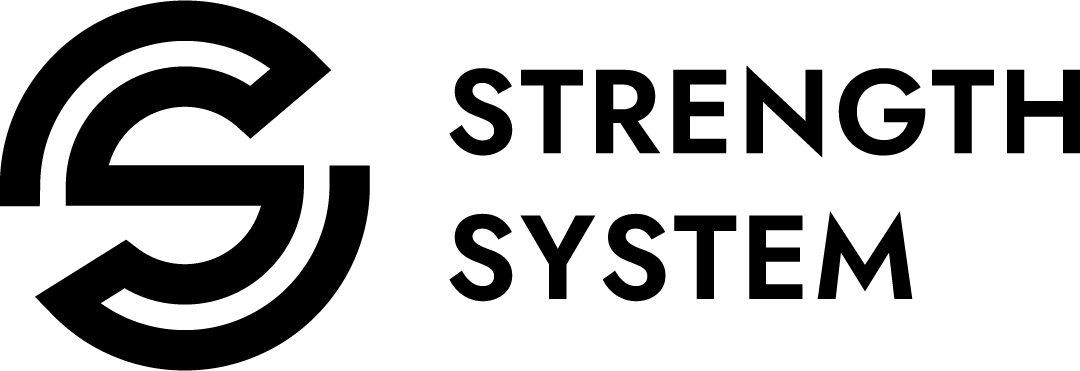25 February, 2020
Sebastian Oreb
Your Program Sucks: Part 6
…because you’re not prioritising your health
If I were to ask you the question, “health or performance?”, which one would you choose? There are a lot of people who would choose to focus on performance and hope for the best with their health, and if you’ve never been badly injured or don’t have any immediate health concerns then there is a good chance that this will be your answer. On the other hand, some of you are working to rehabilitate an injury or may have an ongoing health condition that steals the focus off performance and dominates the majority of your training. Another answer I might get from someone is that they’ve thrown performance to the wayside and chosen to train purely for “functionality” or “functional training”. So for you, which will it be- health or performance? Take a second now to think what your answer might be.
Thank you for joining me on this thought experiment, but now I have to admit something to you. The question I posed to you was a little bit misleading. When I ask “health or performance?”, the assumption is that you have to choose between these two options in a ‘this or that’ format. In actual fact, if you were to ask me this same question, my response would invariably be “yes please”. After all, the girl from the Old El Paso advertisement said it best… ¿Porque no los dos?

In this article I am going to explain why it’s not only possible to train for both health and performance, but it is actually the preferred approach if you want to be the best in your field or to become the healthiest possible version of yourself. Welcome to the third component of Exercise Selection and sixth reason why your program might suck.
I want to start this off with a brief history of where I started as a coach because it is very relevant to the topic at hand. I consider myself very fortunate in that I get to to work with some of the world’s most elite strength athletes and a lot of people see me now and think that I’ve always held this position. I’m going to deliver a reality check for any coaches reading this: there is no “direct entry path” to elite coaching, and if you want to be good at working with athletes of the highest level, then you will need to do your time in the trenches working with a broad variety of general clientele which will most likely be in a commercial gym setting. The second reality check I want to give you is that these hours you clock will provide invaluable exposure to business, sales, and coaching skills that you will not be taught elsewhere. In my case, I started out at Fitness First doing 10 hour days training general population clients.
Like many coaches in the early days of their career, my primary goal at this point was to keep my business afloat and to be successful at my job so I could earn a living. With this goal in mind, I quickly realised that I would need to find some way to set myself apart from everyone else by developing a specialty that no other trainer was offering. If you can identify a need in an industry that is not being met and find a way to provide this for your clients, then your professional value increases substantially. My clients were already getting great results but it was around this time that I started to notice a trend emerging, and that was that basically everyone who was coming to me was nursing some kind of injury or movement dysfunction. While most of these issues were developed outside of the gym, the fact was that they were impacting my clients’ training as well as their quality of life. It was out of necessity that I decided to educate myself on injury rehab and human anatomy so I could deliver a better service to my clients, but this serendipitously lead to me discovering a specialty and philosophy that continues to shape how I approach all aspects of training to this day. I spent every hour that I could reading and learning about the human body. I’m going to stop the story here and say that if you are a coach in this industry, you can never, ever, EVER have too much anatomy knowledge and if you had to choose one thing to invest your time and money into learning – this should be it.
Now back to the story. This interest in injury rehab revealed a fascinating pattern, and it soon became very clear that the more I learnt about treating and preventing injuries, the stronger my clients became. I started applying the same principles to my own training and my strength skyrocketed. This led to a natural progression into competitive powerlifting, where my clients and I were adding to our trophy collection with every competition that we entered. Not only were my clients stronger than they ever were, but they were less injured than they had ever been despite the fact that they were now engaging in high level competitive strength sports. Sally from marketing, who used to complain about back pain while picking up her kids, was suddenly winning regional and national powerlifting competitions and moving totally pain free. These results blew me away, and further ignited my interest in the topic of health and its impact on performance. The simple fact is that health and performance are intimately intertwined, and pursuing one in isolation from the other will only lead to partial result.
As these results continued to roll in, I began to wonder how it could be that by shifting the focus towards health, my clients were performing better than ever. The obvious explanation for this is that because my clients and I experienced fewer pains and injuries, we were able to train better and harder for longer. You can’t reach the highest level of performance with a broken body, and when all other factors are accounted for the athlete who is able to train the longest and remain injury and illness free, is the athlete who wins. There is a lot of truth to this explanation, however after years of employing and refining this approach I can see that this is not a complete answer. What I’ve realised is that the principles I applied to rehabilitate actually have a huge cross-over to strength progression, and vice versa. Everything that I learned about preventing injuries focussed on obtaining structural balance across the body, optimising movement efficiency by prioritising good technique, only allowing pain free movement, and lifting at an intensity that allowed the client to practice and execute perfect reps and sets. If you have been following me for any amount of time, you will know that I use these exact same principles to guide the training of even my strongest athletes. Further, the progression and goals that we already had in place for my clients’ training gave direction to their rehabilitation work, and by applying progressive overload and other strength principles to these movements their results surpassed what they would have been otherwise. An interesting fact that only supports this theory, is that the man who is commonly referenced as the modern godfather of progressive overload was Dr Thomas Delorme, who pioneered progressive overload as a way to accelerate the rehabilitation of soldiers who had lost limbs and suffered other injuries in WW2. He went on to publish research on the progressive overload principle and this was a huge step forward in creating the body of research we now have on this topic.
So how do we balance health and performance in a weekly training schedule? Here are just a few key principles I like to follow regardless of whether my athlete is pursuing a strength, or a health/rehab goal:
- Technique is everything. The technique that will make you the strongest is the technique that is most efficient, and efficient movement will allow you to train injury free for longer.
- Strong, balanced, and healthy joints are strong, balanced and healthy joints. Enough said really.
- Never train to failure when technical breakdown is present. The more complex the movement, the more risky it is going to failure and for any exercise you should not train beyond “mechanical failure” (breakdown of technique).
- Work towards achieving structural balance across the whole body. Injuries occur when there is a structural imbalance, strength discrepancies occur when there is a structural imbalance, and from an aesthetics standpoint you’re a lot more likely to get laid if you have a structurally balanced physique (or so I’ve heard).
- Make your warmups count. Warmups aren’t just to “get warm” but are an opportunity for you to set yourself up for the best session possible.
– Warm up slowly, don’t be in a rush to get up to your working sets. The better you warm up, the better your working sets will actually go. Use these sets to practice perfect technique and get into a good groove before your heavy sets.
– Stimulate, don’t annihilate – use your warmups to prime the body, not to fatigue it. - Never train through pain – pain is a sign that something is not right and it’s also an opportunity to identify and address a dysfunction. A painful movement is not a functional movement, and a dysfunctional movement is an inefficient movement. Your goal should be to move efficiently and free from pain.
- “Slow is smooth, smooth is fast” – control, precision, and tension should be prioritised over speed and power in your lifting technique, and then you can apply speed and power later (once control, precision and tension have been mastered).
- In order to improve, you need to improve on a weekly basis in one way or another. This counts for performance strength lifts and rehabilitation movements.
- Set measurable goals for what you want to achieve, then prioritise your training around your goals. Make sure you track your progress to ensure you are staying on track.
Now before I finish this off, I want to say that the principle of the interplay between health and performance absolutely does not just apply to joint health. I used joint health as an example because it’s something that I have had a lot of experience with, and one that many of you may relate to. This principle also applies to heart health, organ health, mental health, nutrition, stress management, and much more. The idea that you need to throw your entire health to the wayside in order to perform, and the idea that you need to stop pursuing performance goals if you want optimal health – are two very common misconceptions that I hear thrown around in any high performance or health context. Stress management is key to maximise performance. Heart disease is not. The nutrition I eat to perform is the same nutrition I eat to optimise my health (more on this in a future article). Taking the stairs instead of the lift isn’t going to ruin your gains, you’re just lazy. Sorry bro, it had to be said. And lastly, if you’re in the exact same place that you’ve been for years because you are choosing to focus on “health” instead of performance, then your program also sucks.
In conclusion, I’m passionate about what I do and what I say, and I really do want the best results for you all. Please know that this involves achieving your goals and staying in good health while doing so. Not only that, but I need you to stay in good health in order to perform, and I need you to keep some kind of performance or goal in mind in order to stay in good health. Separating these two is like separating cookies and milk, Mario and Luigi, and Kim Kardashian and Ray J… I mean Kanye. I’m sure you get the drift – some things just shouldn’t be separated.







